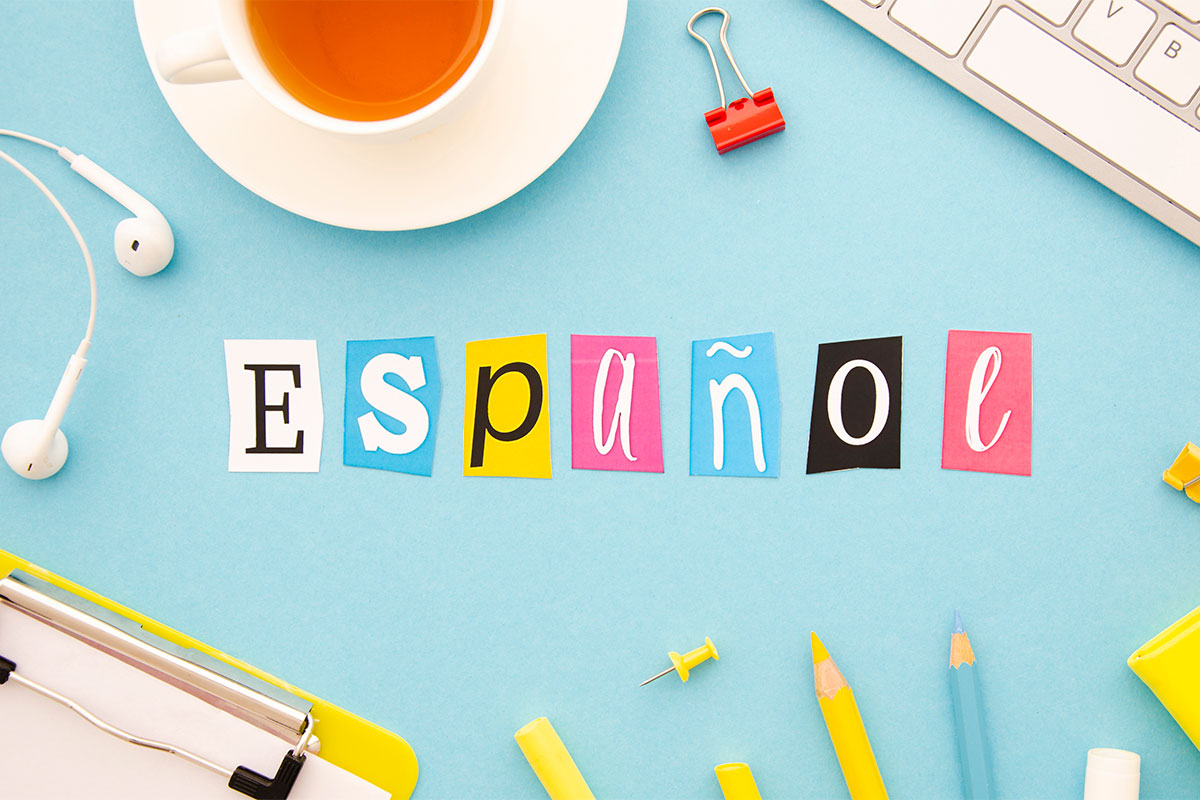Learning a foreign language is always an exciting adventure and Spanish is one of the most in-demand languages in the world. With the right attitude and tools, you can make great progress in no time so if you’re thinking of learning Spanish from scratch, here is some advice for learning Spanish for beginners and where should you start so you get the best foundations to really make progress with your Spanish.
Speak, and adapt your learning to fit in with your own interests
Studying doesn’t have to be about sitting and studying grammar from a book! The more you enjoy yourself, the more you’ll want to study! A great way to do this is to start by adapting your learning process to your interests. If you’re a keen football fan, think about reading about your favorite Spanish player in Spanish, or even watching a match with Spanish commentary. You might love fashion and enjoy blogs about the latest trends – follow some Spanish fashion accounts on Instagram, or buy a copy of Vogue in Spanish and underline all of the vocabulary you don’t know to look it up later.
 Keep speaking and listening
Keep speaking and listening
In a lot of cases, Spanish for beginners follows the same norms as learning on higher levels. Language exchanges, finding native Spanish friends, YouTube or online Spanish classes will all help you to improve your oral Spanish skills wherever you are in the world. At first you may feel lost and unable to understand too much, but after a while, it will get easier and you’ll really start to notice the difference.
Take advantage of technology!
Why not start this adventure by watching a series in Spanish or downloading an app so you have access 24/7! Today, platforms such as Netflix, Amazon Video or HBO, not only allow you to change the language of your favorite series, but also offer international content that allows you to listen to different accents. Here you can find some really interesting Spanish series to add to your list!
Make the effort to learn something new every day
Attending Spanish classes twice a week is great, but what happens the rest of the time? It’s very important go a step further when it comes to your learning and that you try to immerse yourself in the language as much as possible. There are many ways of adding Spanish to your daily routine: change the language on your phone to Spanish, try to watch TV shows in this language, download some podcasts, follow Spanish twitter accounts, write your shopping list in Spanish, get an online Spanish course, etc… Add some of these ideas to your routine and you will learn Spanish twice as fast and spend half the money.
Surround yourself with Spanish
A great way of improving your new language skills is to practice speaking with a native speaker. They will easily be able to correct any grammar or pronunciation mistakes you make and can introduce you to more informal or colloquial forms of speech that you won’t find in a textbook. Look for conversation groups in your area or find someone interested in doing an exchange… it’s a win-win!
Be brave: learn from your mistakes in Spanish!
Last but not least! If you’re not making mistakes, you aren’t trying hard enough. An important part of what you learn will come from the mistakes you make, becoming aware of them, and self-correcting your Spanish. Your main goal should be to communicate and you shouldn’t be afraid to do it. Remember, practice makes perfect!
LAE Madrid’s top Spanish for beginners tips
 We have talked with our teachers and the teachers from LAE Madrid Spanish Language School and they have provided us an action plan of where to start if you want to learn Spanish. The most important thing is to combine all the aspects of a language together so students are able to speak, read, listen and interact with others. We also mustn’t forget about socio-cultural knowledge and intercultural awareness (essential to understand many language rules and to know more about the language and traditions of a certain country).
We have talked with our teachers and the teachers from LAE Madrid Spanish Language School and they have provided us an action plan of where to start if you want to learn Spanish. The most important thing is to combine all the aspects of a language together so students are able to speak, read, listen and interact with others. We also mustn’t forget about socio-cultural knowledge and intercultural awareness (essential to understand many language rules and to know more about the language and traditions of a certain country).
Below you will find the steps to start learning Spanish:
Present yourself!
One of the most important things when learning a language is knowing how to present ourselves, so we can start a basic conversation. Explaining where are we from, our age and names of different nationalities is the basic knowledge when first approaching a new language. In this video from On Español you will learn about presentations.
During this first lesson you will also learn formal and informal ways to approach others, asking for somebody’s name and explaining how are you feeling (basic feelings, remember – we’re only just starting!).
Nouns, numbers and gender of the words
After greetings and presentations, get ready to learn some vocabulary about jobs! By learning this kind of words you will also learn about gender and you will be able to explain more things about you like what do you do for living. Check the video to learn different jobs in Spanish.
Apart from the new vocabulary and the gender of the words, another important first step is to learn the numbers (this will be key to learn about hours, time, prices, quantity, telephone numbers…)
Present tense
In Spanish there are three conjugation models for verbs that are distinguished by the termination of the infinitive in -ar, -er, -ir and each verb tense is written in a different way… But don’t worry! Beginners always start for the present tense to get use to Spanish verbs forms.
Questions
Get to know the most simple formulas to ask easy questions using interrogative adverbs! By learning how to ask basic information, you will be able to interact with other people and know more about them.
 Family
Family
Now that you know how to ask some questions is time to learn about family members. You already learnt gender so it would be easier for you to remember this kind of words. Use this new vocabulary to present your family and ask your partners about theirs. According to our teachers, once you are in this step you will understand more things and you will be able to identify some words and expressions considering the context.
Prepositions
There are quite a few prepositions in Spanish and of course, you won’t learn all together by heart during the first lessons. However, it is time to discover the most used prepositions so you can explain where an object is in the classroom for example. If you want to practice more prepositions, On Español’s YouTube channel has a video with important verbs and the prepositions that follow them.
Directions
Know where you are and ask for directions! Whenever you are travelling to another country, this kind of information is crucial (we don’t want to get lost or miss what we are looking for). Learn expressions related with directions, some vocabulary about the street and fixed expressions. Check this video to learn how to ask for directions!
Food
When learning Spanish, as we said before, culture and traditions play an important role to immerse yourself into the language and so it does food! Get to know about the Spanish gastronomy, typical dishes, eating timing… Did you know that in Spain is typical going to a bar to eat some tapas!? Learn how to ask in a bar here.
Describe your house
Finally, learn how to describe your house. Once you know how to get to a place, is time to describe your place! With the prepositions you learnt and the rest of lessons, it will be effortless! More info about how to describe your home here!
If you want more Spanish for beginners tips, check out our blog. You can also try or free A1 level demo and get started whenever you are ready!
